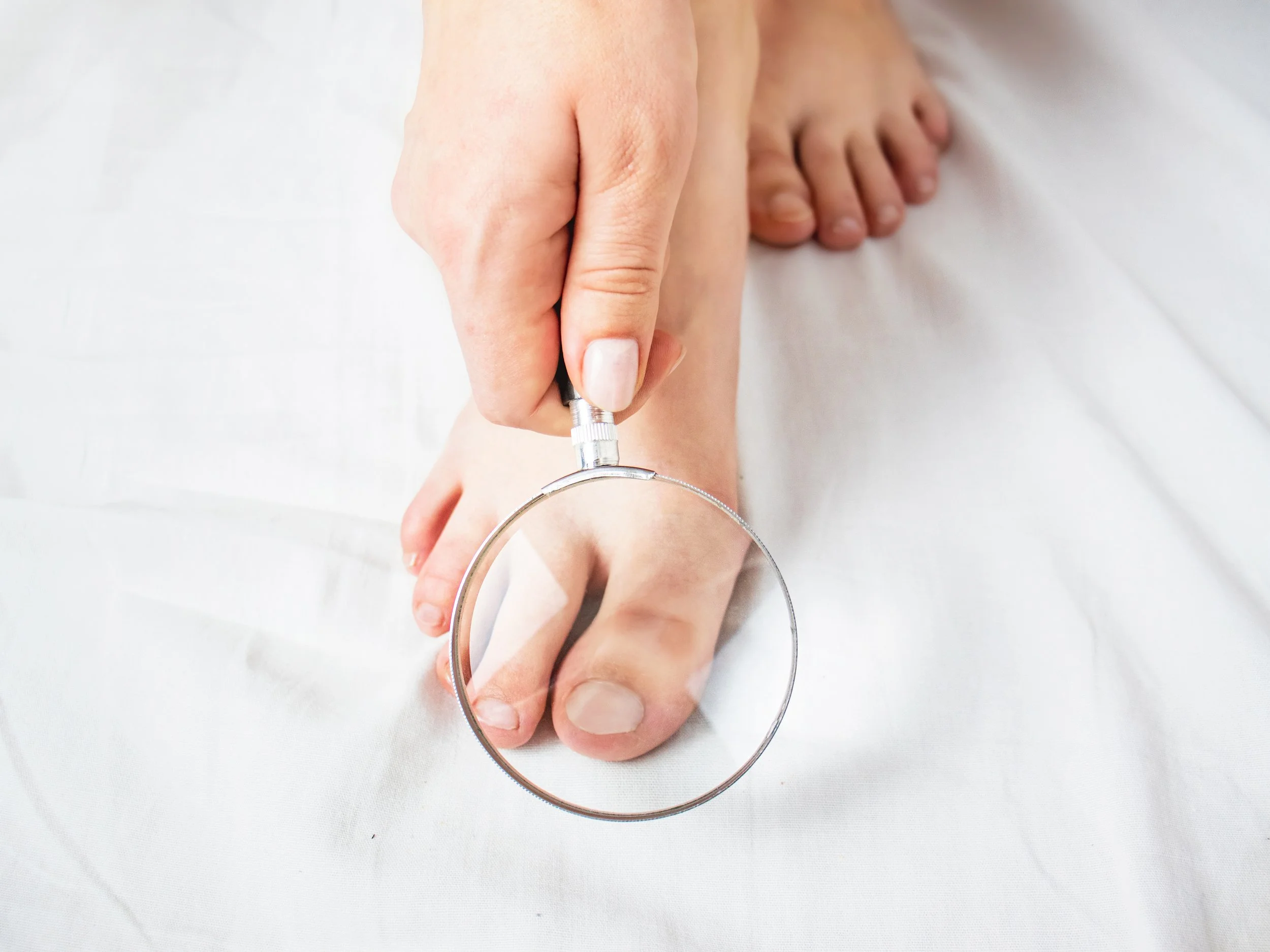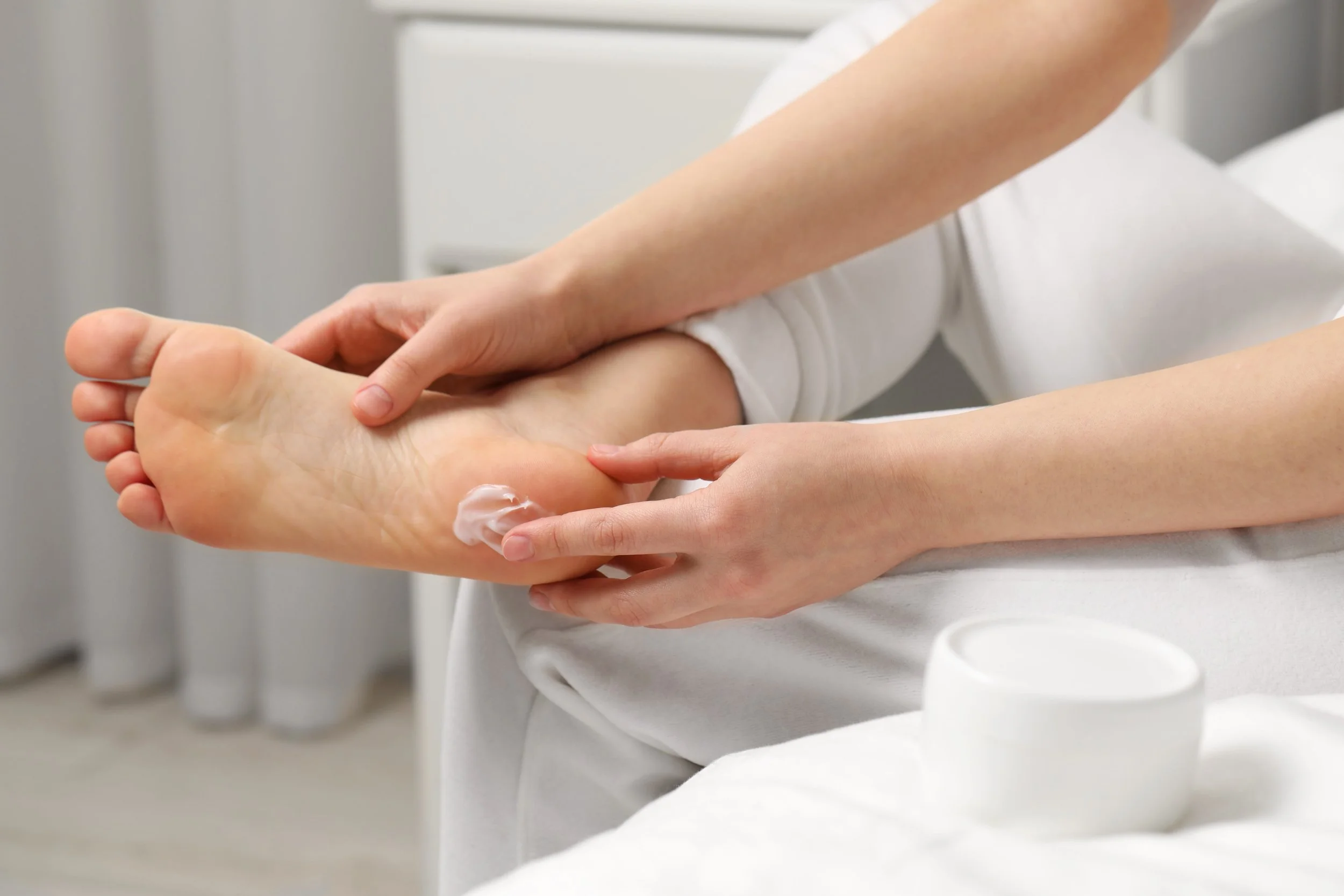Cracked heels? Here’s what to do!
As a podiatrist who battles with my own dry, cracked heels every summer, I’ve tried just about every cream, treatment, and technique over the past 25 years.
If your heels are looking worse for wear as we head into the final weeks of summer, you’re not alone! The combination of sandals, thongs, salt water, sand, chlorine and going barefoot can wreak havoc on your feet over the summer months. The good news? With the proper routine, you can get back to soft, smooth heels within a few weeks.
“Most people can treat their feet at home to resolve dry heel problems. And you guessed it … it’s by regularly applying moisturising cream to your heels.”
Start With the Moisturiser You Already Have
Before you rush out to buy a new cream, start with what you have at home. Most of us have a collection of body moisturisers gathering dust in the bathroom cupboard. Pick one and follow the next steps—if you’re not seeing results, then it’s time to switch to a specialised heel cream.
Apply Moisturiser Properly
A quick 20-second rub won’t cut it! Spend at least 5–10 minutes massaging the cream into your heels and the soles of your feet. If you do this properly, you’ll only need to apply moisturising cream 2–3 times a week to see a big improvement.
Set a Regular Moisturising Routine
If you always forget to moisturise, set a reminder on your phone. Choose a time when you can sit and relax—Netflix and foot care go hand in hand! My personal routine? I sit in front of the TV and massage the cream into my feet while watching a show. Another great option is applying moisturiser before bed.
Moisturise After a Shower
Applying cream straight after a shower can make a huge difference. Warm water softens the skin, making it easier for the moisturiser to absorb. If your heels are extra dry, this trick is a game-changer.
Cover All Areas - Except Between the Toes
Don’t just focus on your heels—rub the cream all over your feet (and legs), but avoid the spaces between your toes.
Struggling to reach down to your feet? Get a family member to help (hello, free foot massage!) or plop a blob of cream onto the top of one foot and use your opposite heel to rub in the cream—no bending required.
Wear Socks After Moisturising
Freshly moisturised feet can be slippery and dangerous on hard floors, so pop on a pair of socks afterwards to lock in hydration and prevent a potential slip.
Remove Hard Skin—But Safely!
If you don’t have diabetes or peripheral neuropathy, you can gently exfoliate your heels once or twice a week with a pumice stone or chiropody sponge. This helps your moisturiser penetrate more effectively. Please, never use blades, graters, peels, or anything too aggressive on your heels—these can cause more harm than good.
My Favourite Home Product: The Fiume Chiropody Sponge (available at Blackwood Podiatry) is hands-down the best at-home tool I’ve used for tackling dry, hard skin.
FAVOURITE PRODUCT ALERT!
Fiume Chiropody Sponge (available through Blackwood Podiatry) works better than anything else I've tried at home to remove dry hard skin from my heels. I highly recommend!
Adjust Your Routine Based on Summer Activities
Love the beach or pool? You’ll likely need an extra moisturising session afterwards. Sand, salt, and chlorine dry out the skin, so be proactive about replenishing lost moisture after a day in the water.
Choose the Right Footwear
Open-backed shoes and thongs expose your heels to the elements, increasing dryness and cracking. If you’re prone to cracked heels, opt for sandals with a closed-in heel whenever possible.
Socks, socks, socks!
Although the thought of wearing socks on a warm day is not overly appealing, wearing socks around the house (rather than going barefoot) will make a huge difference to the dryness of your heels.
When should I see a podiatrist?
Most dry, cracked heels can be treated at home, but if your heels are still in rough shape despite regular self-care, it’s time to book an appointment.
You should see a podiatrist if:
Your home treatments aren’t working
You have diabetes or peripheral neuropathy
Your heels are painful, bleeding, or deeply cracked
You have any concerns about your foot health
At Blackwood Podiatry, we can safely remove hard skin, recommend the best heel creams, and assess whether an underlying condition is contributing to your heel issues.
We will also recommend referral to an appropriate health professional if it is determined that a nutritional or other medical disorder is causing your heel issue.
“Podiatrists use professional tools to safely remove hard skin from your heels. We also have access to a wide range of heel creams to suit all types of feet.”
So there you have it! With the right routine, a little consistency, and a few podiatry-approved tricks, you can enjoy summer without worrying about cracked, painful feet. So, slip on your sandals, enjoy the beach, and don’t forget to moisturise!
Please feel free to share this article with friends and family (particularly those with dry heels!)







